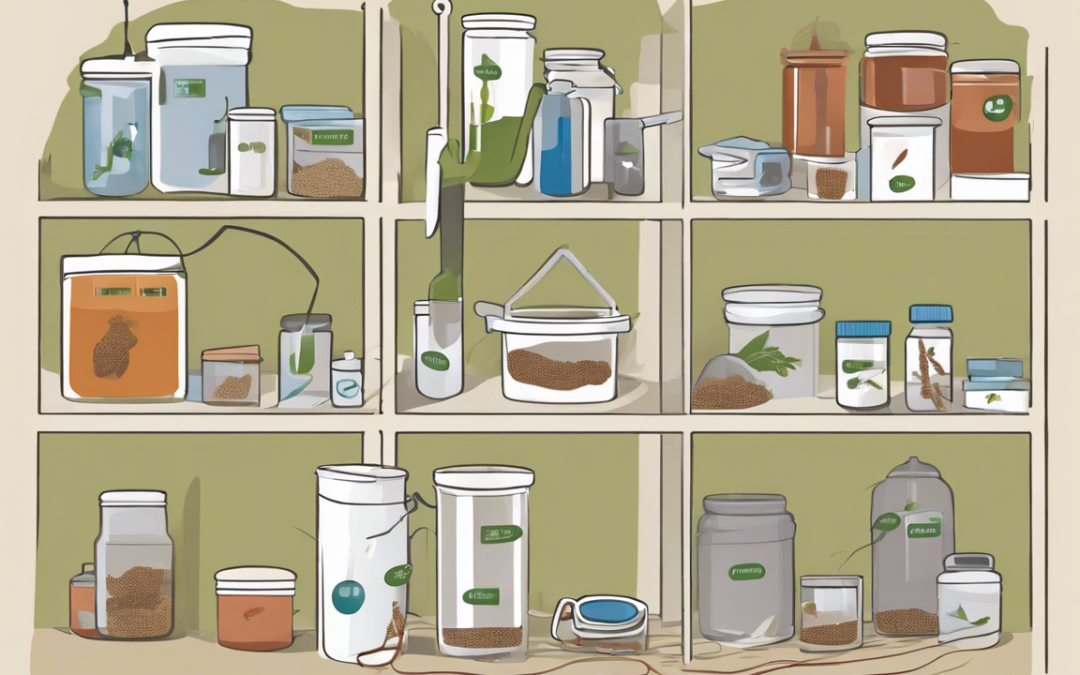If you’ve ever encountered larvae infestations in your home, you know how distressing it can be. These immature insects can cause considerable damage to food, clothing, and even the structural components of your house. But don’t fret! This comprehensive guide will give you insights into some of the common household larvae – their identification, prevention, and control strategies to maintain a clean and safe environment.
Here are some key takeaways:
- Understanding the types of larvae that may show up in your house and knowing how to deal with them is crucial.
- Moth larvae, fur beetle larvae, wood-boring beetle larvae, and larder beetle larvae are some of the most common household pests.
- Preventing an infestation involves regular cleaning, proper storage practices, and the use of repellents.
- In severe cases or when in doubt, professional pest controllers can offer highly effective solutions.
Home infestations of larval pests
Many people experience the presence of larval pests in their homes. Larvae are the immature stage that numerous animals go through after hatching from their eggs and before undergoing metamorphosis into their adult form. During this stage, larvae consume nutrients and are not sexually mature. Identifying which insect a larva will become can be difficult due to their similarities. Regardless of whether they inhabit your kitchen, wardrobe, or wooden structures, different types of larvae can find their way into your home.
Common household larvae
Larvae can cause damage to food, clothing, and even structural components of your house. Understanding the different types of larvae that may appear, their appearance, and how to deal with them is crucial for maintaining a clean and safe household.
Moth larvae
Food moths: Food moths, such as Indian meal moths and flour moths, lay their eggs in dry foods like grains, flour, pasta, nuts, dried fruit, and spices. The larvae feed on these foods, causing contamination and destruction of the food items.
Clothes moths: Clothes moths, such as the common clothes moth (Tineola bisselliella) and the case-bearing clothes moth (Tinea pellionella), lay their eggs on natural fibers like wool, silk, fur, and feathers. The larvae feed on the fibers, causing holes and damage to clothing, carpets, and other textiles.
Prevention and control:
Store food items in airtight containers to prevent moth access.
Regularly clean pantries and cupboards to remove any eggs or larvae.
Wash and properly store clothing, particularly items not often used, in sealed bags or containers.
Use mothballs, lavender sachets, or cedar in closets and drawers to repel moths.
Freeze infested food items or clothing for at least 72 hours to kill eggs and larvae.
Fur beetle larvae
Fur beetles, such as the common carpet beetle (Anthrenus verbasci) and the brown carpet beetle (Attagenus pellio), lay their eggs in textiles, carpets, and other materials containing animal fibers. The larvae feed on wool, silk, feathers, and skin particles, causing significant damage to these materials.
Prevention and control:
Vacuum regularly, focusing on corners, under furniture, and along baseboards, to remove larvae and eggs.
Store woolen clothing and other animal fiber items in sealed bags or containers when not in use.
Use insecticides or natural repellents like cedar to protect against carpet beetles.
Clean and inspect old furniture, carpets, and antiques regularly for signs of infestation.
Wood-boring beetle larvae
The house longhorn beetle (Hylotrupes bajulus) and the common furniture beetle (Anobium punctatum) lay their eggs in wood. The larvae bore into the wood, causing serious structural damage over time. Wood-boring beetles are particularly problematic in buildings, where they can weaken roof trusses, beams, and other wooden structures.
Prevention and control:
Regularly inspect wood for signs of activity like small holes, frass (fine, powdery dust), and weakness in the wood.
Use wood preservatives to prevent infestations, including chemical treatments like impregnation and application of insecticides to wood surfaces.
In cases of severe infestations, contact professional pest controllers for assessment and treatment. They can employ specialized methods such as fumigation or heat treatment to eliminate the larvae.
Larder beetle larvae
Larder beetles, including species like the fur larder beetle (Attagenus pellio), the varied carpet beetle (Anthrenus verbasci), and the bread beetle (Stegobium paniceum), lay their eggs in dry animal materials like fur, feathers, wool, leather, as well as dry food items like flour, spices, and grains. The larvae feed on these materials, causing significant damage in museums, storage facilities, and homes.
Prevention and control:
Store food in airtight containers to prevent larder beetles from laying eggs in them.
Keep the area clean and free of animal materials like fur, feathers, and wool scraps.
Vacuum regularly to remove larvae and eggs, especially in areas where animal materials are stored.
Use insecticides specific to larder beetles as needed, following the manufacturer’s instructions carefully.
Check for sources of infestations, such as bird nests and dead insects, and remove them from the vicinity of your home.
Professional assistance
If you encounter problems with any of these larvae, it may be necessary to contact professional pest control services for help. Pest Control1 AS offers expert solutions for managing pests effectively and in an environmentally friendly manner. We can assist with identification, prevention, and control of various pest larvae in your home.
Contact us today for professional assistance with pest issues! We ensure that your home remains safe and free from pests.

